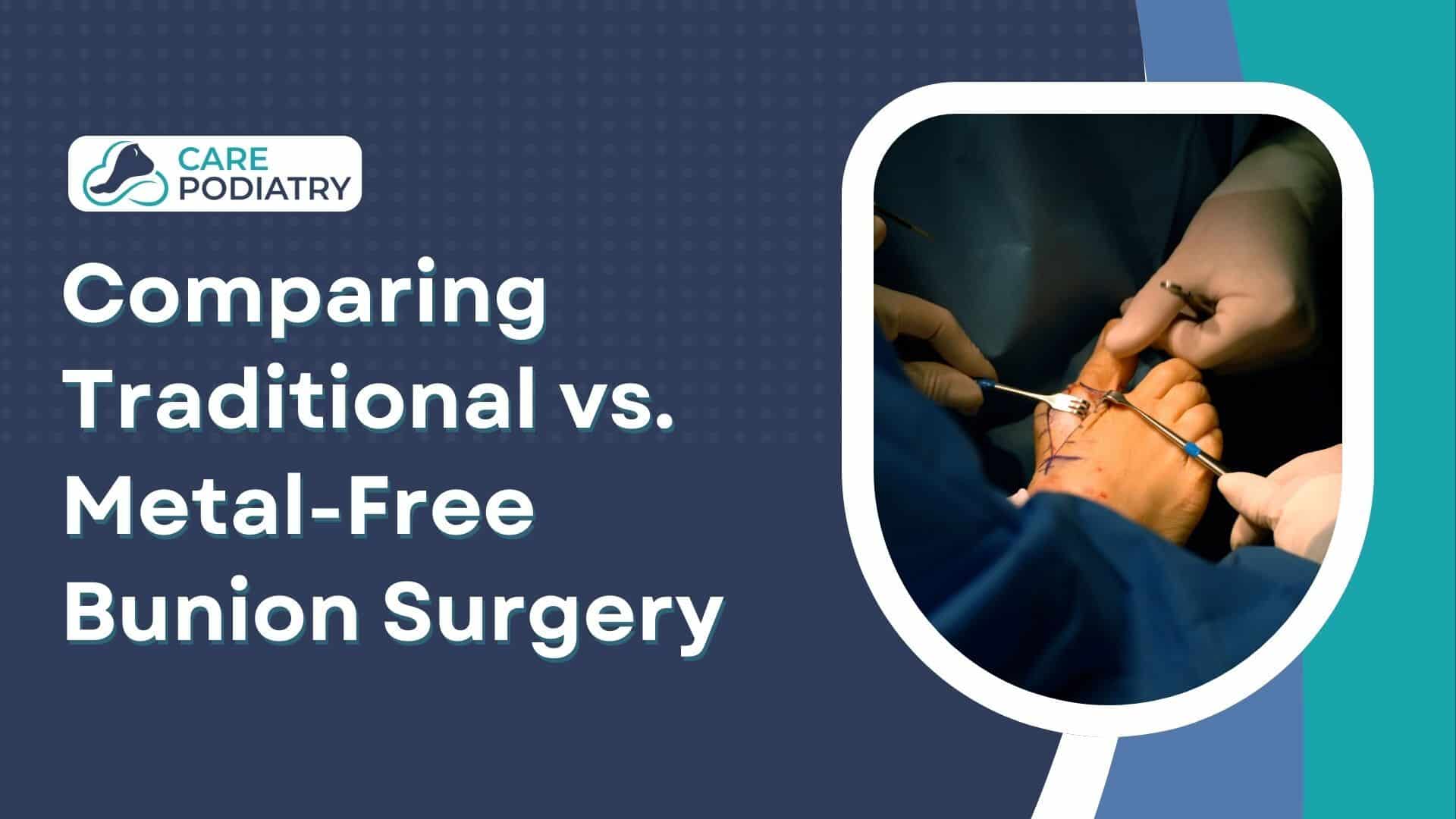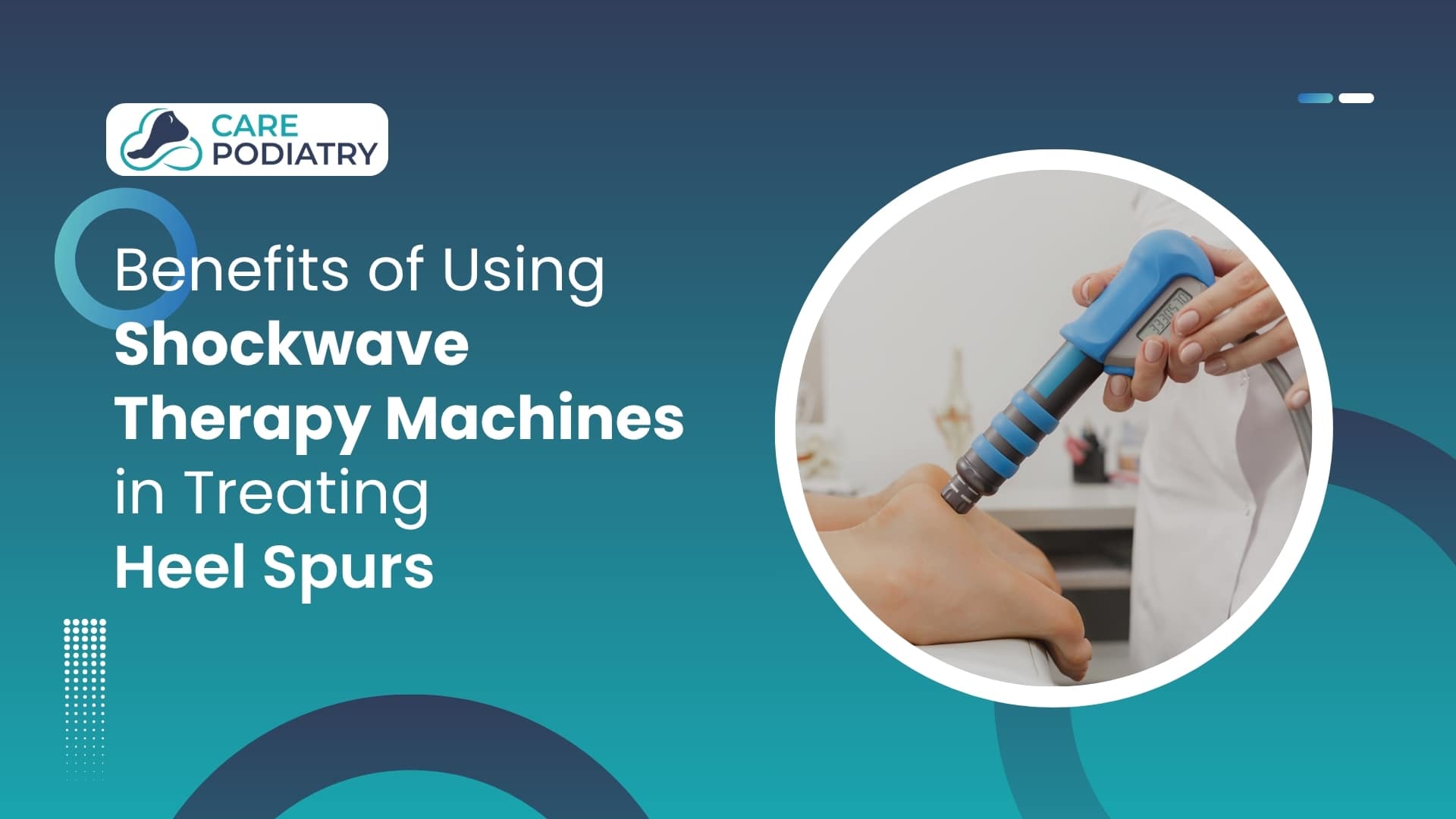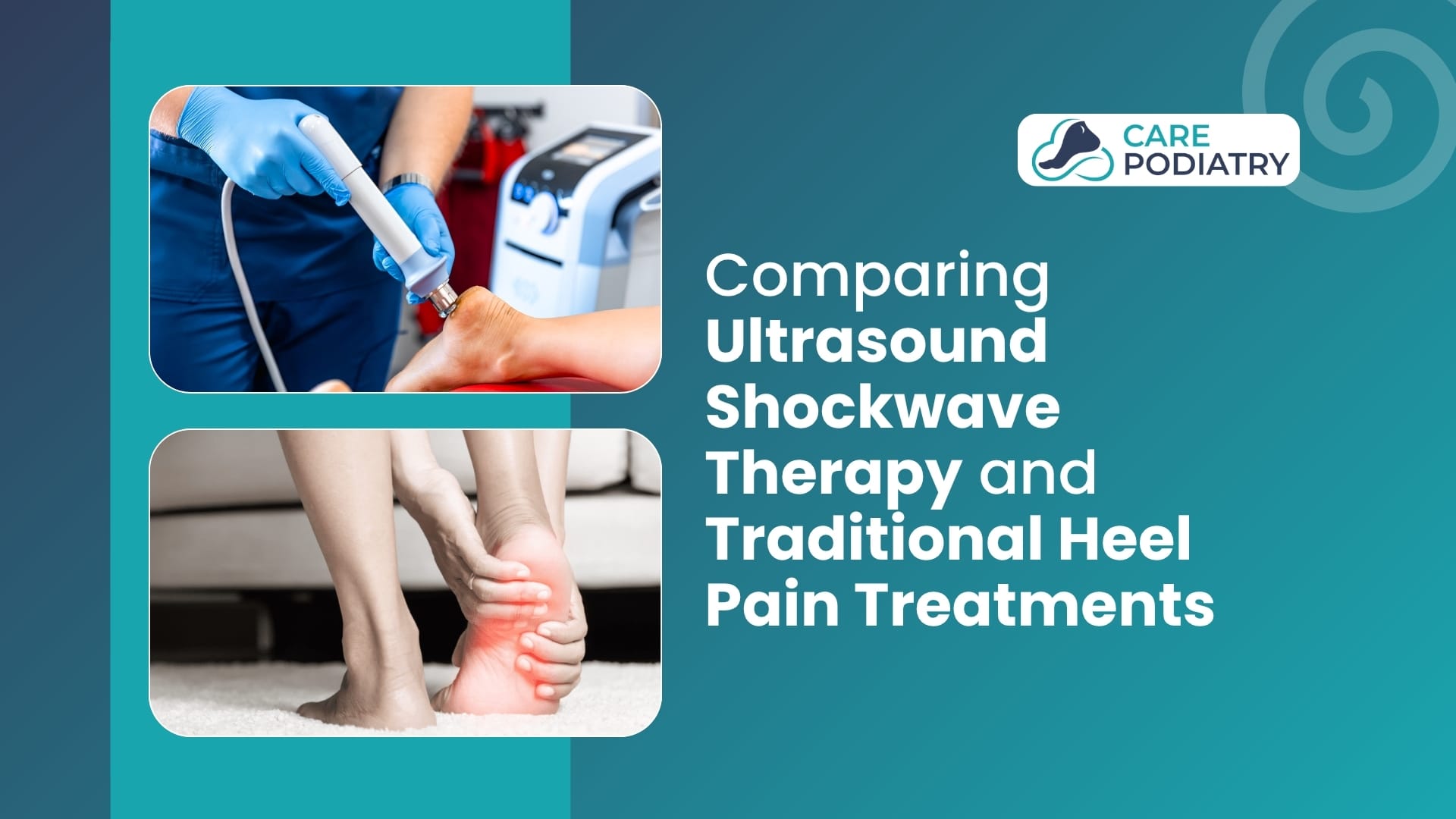Comparing Traditional vs. Metal-Free Bunion Surgery
- carepodiatry

Bunions are small but have major control over daily life. With the inconvenience of finding comfortable shoes and chronic pain that inflames with every step, even a short walk becomes an irritating experience for the bunion sufferer.
That’s why bunion surgery is one of the most common and frequently performed surgeries. Unfortunately, not many people are aware that there is more than one way to solve a bunion – and that the way chosen can greatly affect your recovery, comfort in the long term, and overall results.
For years now, traditional bunion surgery has relied on metal screws and plates to realign the foot. However, new metal-free surgical options are becoming popular and promise fast healing along with fewer complications.
This comparison guide has broken down the differences between traditional bunion surgery and metal-free bunion surgery.
What Is Traditional Bunion Surgery?
Traditional bunion surgeries included Osteotomy, Arthrodesis, and Exostectomy. An Osteotomy involves making incisions in the bones. Your doctor uses plates, screws, or pins to repair this new fracture after cutting the bone. The joint is now balanced, and the bones are more erect. To fix the abnormality, osteotomies can be done in several locations along the bone. Sometimes, to give sufficient correction to straighten the toe, a tiny wedge of bone is removed in addition to the bone being sliced.
In Arthrodesis, your doctor will remove the arthritic joint surfaces and then place wires, screws, or plates to secure the surfaces together until the bones recover. This treatment is also known as a fusion.
In Exostectomy, the doctor will remove the lump from your toe joint during the operation. Since Exostectomy does not straighten the joint, it is rarely used alone to cure bunions. Exostectomy seldom fixes the source of the bunion, even when paired with soft tissue operations. Most frequently, exostectomy is done as a part of a full corrective surgery that also involves soft-tissue treatments and osteotomy.
What Is Metal-Free Bunion Surgery?
Metal-free bunion surgery uses cutting-edge methods that fix toe position without keeping screws, plates, or any extra tools. Rather than using long-lasting implants, this method usually employs dissolvable pins or internal stitches that go away on their own as the bone mends.
Doctors concentrate on making less harm and saving the body’s true form. Many operations take place through smaller cuts, which helps reduce soft tissue damage and makes recovery faster.
Patients have reported relatively less post-op pain and long-term complications when compared with the conventional methods. Since there’s no metal hardware, there will be no rejection of hardware, allergic reactions, or a future procedure for removal of implants.
This method is preferred more in case of active individuals, relatively younger patients, and generally in people who are looking for a more natural way of recovery.
Traditional vs. Metal-Free Bunion Surgery: A Side-by-Side Comparison
| Feature | Traditional Bunion Surgery | Metal-Free Bunion Surgery |
|---|---|---|
| Surgical Hardware | Metal plates, screws, and wires remain in the foot | Biodegradable pins or sutures that dissolve over time |
| Recovery Time | Often 6–12 weeks with activity limitations | Typically shorter, depending on the procedure and patient |
| Long-Term Complications | Potential hardware pain, allergic reactions, or revision | Lower risk of rejection or need for future removal |
| Invasiveness | Larger incisions and more tissue disruption | Smaller incisions, less invasive overall |
| Follow-Up Procedures | May require hardware removal or revision surgery | Rarely requires follow-up surgery |
| Ideal For | Severe deformities, insurance-based plans | Active individuals, natural healing preference, younger patients |
Who Might Benefit from Each Approach?
Traditional and no-metal bunion operations both try to fix the same problem—but they aren’t exact fits for everyone. Traditional bunion surgery tends to be the better choice for patients with severe deformities, unstable joints, or a history of recurring bunions. Its use of metal screws and plates gives strong, long-time structural support making it a good choice for those who need a more strong fixing. It’s also a more known choice for many doctors so this can be an important point if you go to a certain place to get help.
No-metal bunion surgery usually fits patients better who have light to middle-sized bunions, patients who are allergic or sensitive to metal, or anyone wanting to steer clear of a permanent piece. It’s a good choice for active people who want a faster recovery and less pain linked to hardware.
Younger patients, athletes, and people seeking a more natural approach to healing might prefer this method. Since the body absorbs the biodegradable material over time, there’s no need for a second procedure to remove hardware—just one more reason it’s becoming the go-to for those prioritizing comfort, mobility, and minimal scarring.
What to Ask Your Surgeon Before Choosing
Choosing the right type of bunion surgery isn’t just about the procedure—it’s also about partnering with a surgeon who understands your lifestyle, recovery goals, and long-term foot health. Before committing, it’s essential to ask the right questions to make an informed decision tailored to your specific needs.
Here are some key questions to bring to your consultation:
- What type of bunion surgery do you recommend for my case, and why?
This helps clarify how severe your bunion is and what solution offers the best outcome. - What are the long-term results and risks of traditional vs. metal-free surgery?
Understanding the pros and cons of each approach will help set realistic expectations. - Do you have experience with both surgical techniques?
Surgeons familiar with both methods can give you a more balanced perspective. - What does recovery look like for each option?
Ask about downtime, weight-bearing restrictions, and how long until you can return to normal activities. - Are there any complications associated with metal implants or biodegradable materials?
It’s important to know the potential for reactions, discomfort, or the need for additional surgery. - Will I need physical therapy afterward?
This impacts your recovery timeline and overall outcome.
Bringing these questions into the conversation can open up a thoughtful, collaborative dialogue—and ensure the approach you choose works for your body, not just the bunion.
Conclusion
As more patients seek smarter, less invasive solutions to common foot problems, bunion care is evolving. Traditional surgeries still have their place, especially for complex deformities—but for many, metal-free correction offers a compelling path forward. It reduces hardware risks, shortens recovery, and fits a modern approach to wellness: one that values results and your overall experience.
Care Podiatry is at the forefront of this shift. We offer advanced, minimally invasive options—including metal-free bunion surgery—designed to treat the root of the problem while keeping recovery as smooth as possible. Every treatment plan is tailored to your lifestyle, your goals, and your long-term foot health.
Looking for a bunion solution that puts your comfort and mobility first? Schedule a consultation with Care Podiatry today. Let’s get you moving, pain-free.
Related Posts

Benefits of Using Shockwave Therapy in Treating Heel Spurs
Heel spurs are abnormalities of the heel that are created through the growth of calcium on the lower surface of the heel bone. Their causes are usually repetitive stress, overuse or stress on the plantar fascia.

Comparing Ultrasound Shockwave Therapy and Traditional Heel Pain Treatments
One of the most widespread foot issues that affects individuals of any age is heel pain. Be it due to the presence of plantar fasciitis, heel spurs, or overuse injuries, the condition may cause daily activities such as walking or standing to be very uncomfortable.
